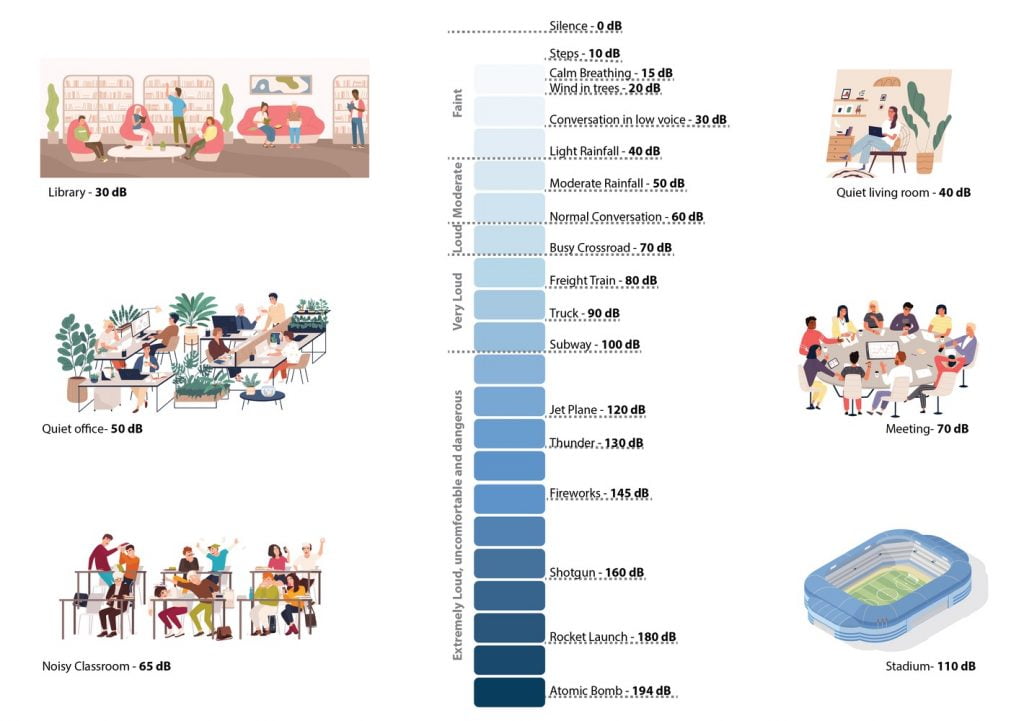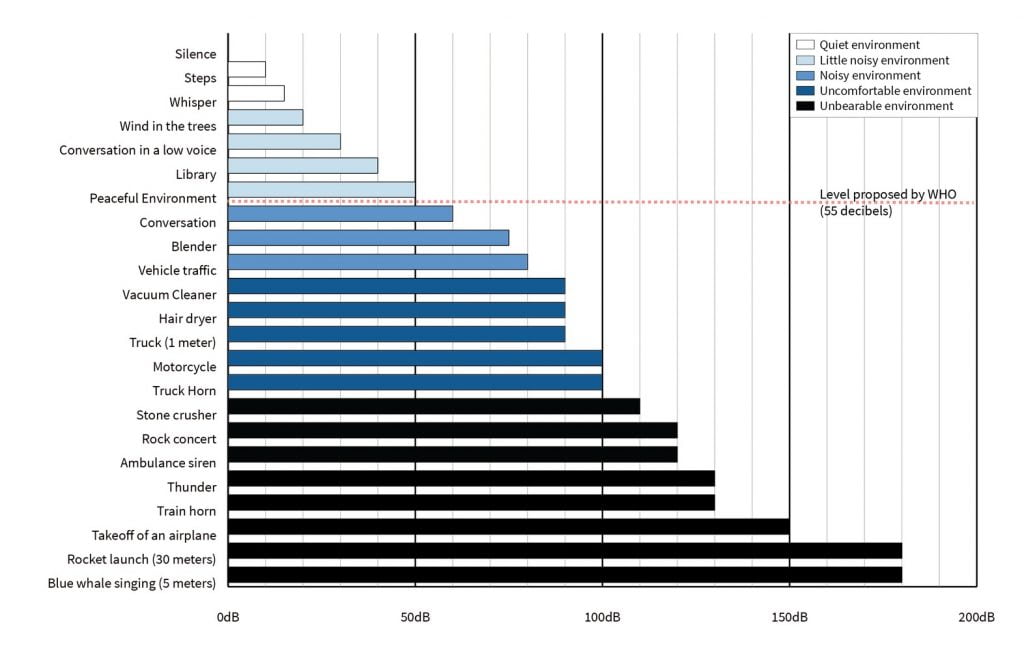In recent times, we are surrounding with different types of sounds. Increasing noisy surrounding environments can significantly and negatively affect our bodies. These higher decibels are a great villain to concentration, learning, and productivity in classrooms and offices. Headaches are one momentary symptom of noise.
But staying exposed to very noisy places can bring greater problems such as hearing loss, lower concentration, high blood pressure, and even poor digestion. It can also trigger high levels of stress, sleep disturbances, mood changes, increased heart rate, and ringing in the ears.
How Noises Affect our Health?

This is an invisible enemy and is often neglected in big cities with the noise of heavy traffic, demolition. and noisy equipment, such as generators and air conditioners. However, effective measures can be taken to avoid this unnecessary noise.
What is noise pollution?
But to begin understanding acoustics, there are several important concepts and terms necessary to understand first. Acoustics are a very complex science, and architects often only give it due importance when it is not well resolved.
The most commonly used unit of measure for sound is the decibel. Unlike units like meters or kilos, of which most people vaguely know the comparative length or weight, decibels are much more difficult to measure without a Sound Level Meter.
What is noise decibel?
Graham Bell, a Scotsman whose surname was honoured with the name of the unit, was the first to discover that the scale of sound perceived by the ear is logarithmic, like the Richter Scale, which quantifies the magnitude of an earthquake.
This logarithmic scale of the sound intensity ratio adjusts to the intensity perceived by the human ear. Since we can hear a very wide range of sound intensities, the limit of audibility — 10-12 watt/m2 — is conventionalized as 0 decibels.
Thus, there are sounds lower than that, but we cannot hear them. At a frequency of 1000 Hz, the human ear painlessly supports up to an intensity of 120 dB. Above this value, sounds are harmful and can irreversibly destroy the structures of the inner ear.
Being exposed to sound levels above 90 dB for more than 4 hours is already highly harmful.
Causes of noise pollution
There are many sources of noise pollution, but here are some of the main ones:
Traffic noise
Traffic noise accounts for most polluting noise in cities. For example, a car horn produces 90 dB and a bus produces 100 dB.
Air traffic noise
There are fewer aircraft flying over cities than there are cars on the roads, but the impact is greater: a single aircraft produces 130 dB.
Construction sites
Building and car park construction and road and pavement resurfacing works are very noisy. For example, a pneumatic drill produces 110 dB.
Catering and night life
Bars, restaurants and terraces that spill outside when the weather is good can produce more than 100 dB. This includes noise from pubs and clubs.
Animals
Noise made by animals can go unnoticed, but a howling or barking dog, for example, can produce around 60-80 dB.
Effects of noise pollution
As well as damaging our hearing by causing — tinnitus or deafness —, constant loud noise can damage human health in many ways, particularly in the very young and the very old. Here are some of the main ones:
Physical
Respiratory agitation, racing pulse, high blood pressure, headaches and, in case of extremely loud, constant noise, gastritis, colitis and even heart attacks.
Psychological
Noise can cause attacks of stress, fatigue, depression, anxiety and hysteria in both humans and animals.
Sleep and behavioural disorders
Noise above 45 dB stops you from falling asleep or sleeping properly. Remember that according to the World Health Organization it should be no more than 30 dB. Loud noise can have latent effects on our behaviour, causing aggressive behaviour and irritability.
Memory and concentration
Noise may affect people’s ability to focus, which can lead to low performance over time. It is also bad for the memory, making it hard to study.
Interestingly, our ears need more than 16 hours’ rest to make up for two hours of exposure to 100 dB.

Effects of noise pollution to the community
The World Health Organization (WHO) uses the value of 55 dB as the ideal maximum for exposure most of the time. The WHO points out that about 20% of the population in European Union countries is exposed to noise above 65 dB (A) during the day, and more than 30% is exposed to levels above 55 dB (A) at night.
Especially at night, exposure to noise of this intensity can trigger everything from sleep disorders and insomnia to increased blood pressure.
To give an idea of how loud this is, a normal and civilized conversation is around 60 decibels. This is also an important reference value, halfway between the limit of audibility and the limit of pain (120 dB).
Some Decibel reference values:
- Normal breathing emits 10 dB
- A soft whisper 30 dB
- A relaxing rain sound 50 dB
- From 60 dB on, it is necessary to pay attention to prolonged exposure to noise
- 85 dB is already equivalent to the noise of a congested street
- 110 dB to a baby crying loudly beside you
- 120 dB to the intensity of thunder
Originally some part of this article published on Arch Daily by Written by Eduardo Souza.
Summary
As the population grows, the number of people living in noisy urban areas will also increase, making up an ever-larger share of the population. But there are ways to combat excessive urban noise, including changing aircraft routes, building road and railway barriers to reduce the level of noise that reaches nearby communities, using quieter hybrid and electric cars, and installing thicker insulation in homes and offices. Jaykumar says that big-picture solutions could go a long way in providing relief from the constant clamor around us.






